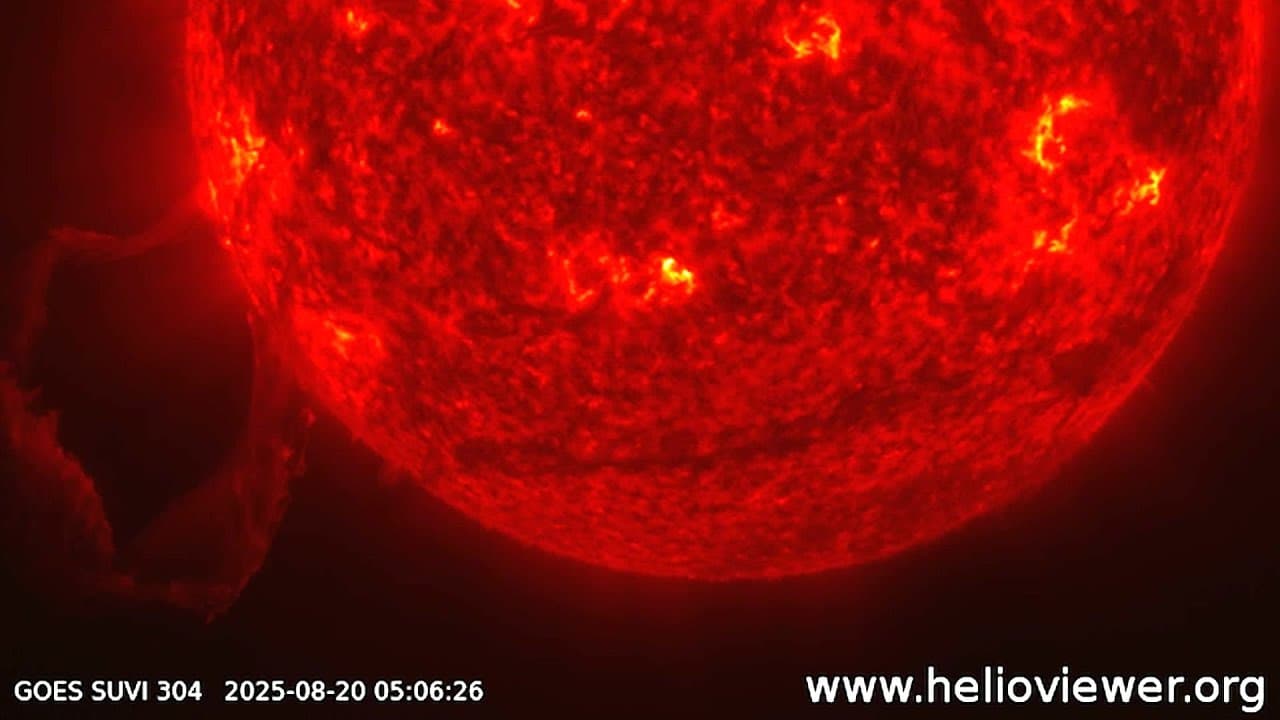Sun Erupts Two Towering Prominences, NOAA Satellite Captures Spectacle
A NOAA GOES satellite recorded two large solar prominences on November 18, 2025, producing striking ultraviolet images that scientists say will be closely monitored for space weather consequences. The event underscores growing global dependence on space based systems and the need for international coordination to mitigate risks to communications, navigation and power infrastructure.

A NOAA Geostationary Operational Environmental Satellite recorded a pair of dramatic solar prominences on November 18, 2025, producing high contrast ultraviolet imagery that was distributed by Space.com and archived with footage courtesy of NOAA's SUVI instrument. The structures arced from the sun's surface and were visible in Solar Ultraviolet Imager data, offering researchers a clear view of magnetic activity on the star that powers Earth.
Solar prominences are cooler, denser plasma held aloft by magnetic fields in the sun's atmosphere. While visually arresting, their significance for Earth lies in the possibility that such eruptions can be associated with coronal mass ejections, streams of charged particles that, if directed toward our planet, can disturb the near Earth space environment. Agencies that track space weather, including NOAA's Space Weather Prediction Center, maintain continuous watches to assess whether ultraviolet and extreme ultraviolet activity will translate into increased risk for satellites and ground based systems.
The November 18 observations arrive amid heightened interest in solar cycle 25, which produced a rise in activity over the past two years and has sustained a tempo of flares and eruptions that keeps space weather centers on alert. Satellite operators, aviation authorities and grid managers rely on timely alerts to adjust operations, reorient satellites, alter flight paths on polar routes and protect sensitive infrastructure from geomagnetically induced currents. The global spread of satellite dependent services means that an active sun can have consequences far beyond scientific fascination.
This event also highlights the transnational nature of space weather monitoring. The GOES series provides critical coverage for the Western Hemisphere from geostationary orbit, while partners in Europe, Asia and Australia maintain complementary sensors. The International Space Environment Service and other cooperative frameworks integrate observations and forecasts to support worldwide preparedness. Governments and private operators increasingly view space weather as a shared risk that requires data sharing, common standards and contingency planning.
For many communities the most immediate public manifestation of such solar activity will be auroral displays at higher latitudes. For critical infrastructure there is a less visible but potentially more consequential impact. Power grid operators in several countries have instituted protocols to reduce vulnerability during strong geomagnetic storms, and satellite manufacturers continue to harden systems against radiation and charging. The commercial space sector has also expanded insurance and operational strategies to manage a recognized hazard that crosses borders and jurisdictions.
Scientists emphasize that not every prominence leads to severe space weather. Determining trajectory, speed and magnetic orientation of any expelled material is essential to forecasting impacts. The SUVI imagery from November 18 offers forecasters and researchers valuable input as they model potential outcomes and refine warning products.
The event serves as a reminder that solar activity is not purely academic. As nations deepen their reliance on space based assets for economic, security and social functions, the interplay between astrophysical phenomena and international infrastructure will remain an area of growing diplomatic and technical importance. Continued investment in monitoring networks and multinational cooperation will shape how effectively the world can anticipate and respond to the sun's next major gesture.


